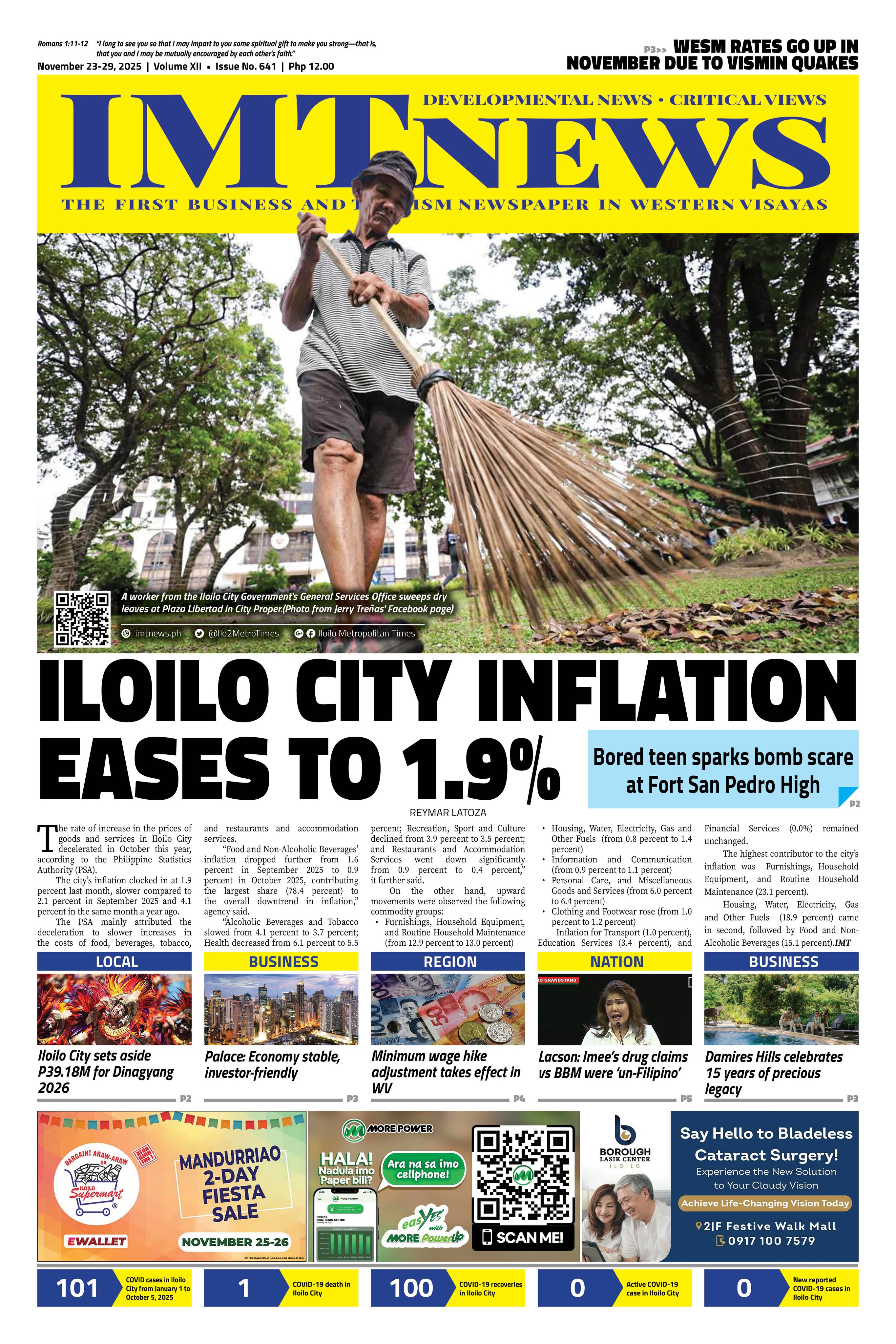You know something is working when the people who quietly fix things every day are the ones speaking up to keep it alive. In the case of the K to 12 reform, it is not only education experts but business leaders, school administrators, religious groups, and community workers who are calling on the government to rethink its impulse to revert to the old 10-year basic education system. Having spent years inside classrooms, behind school desks, and across parent-teacher meetings, I have come to understand that the real problem has never been the additional two years. The problem has always been execution.
We often blame the framework for failures caused by underfunded implementation. Republic Act 10533, the K to 12 Law, was born out of a national desire to give learners a better shot at employment, entrepreneurship, or higher education, locally and globally. Critics say it has not delivered. But let us be clear: What has been poorly delivered is not the vision but the logistics. The COVID-19 pandemic derailed the program’s trajectory, and even before that, teacher retraining, equipment, and immersion partnerships were uneven across regions. According to EDCOM II, 62% of public high school teachers were handling subjects they did not major in. That is not a curriculum problem. That is a leadership and capacity-building issue.
The goal of SHS was never to duplicate—it was to prepare. Two years of formation designed to meet life where it actually happens. When implemented right, it works. I remember a student who finished Grade 12 with a TESDA welding certification. He now earns daily wages that feed his siblings, works part-time, and saves for an engineering course. Tell him SHS failed, and he will show you the roof and pipeline he fixed with his own hands.
While the loud debates go on, quiet progress gets overlooked. I have seen SHS students lead projects, design real solutions, and help solve everyday problems in their communities. In the school I once led, we tied lessons to real problems—and it showed. They might not be in labor reports, but they are living proof that deep, authentic learning is already happening.
The argument that K to 12 has not increased employability misses the bigger picture. According to the Philippine Institute for Development Studies, while only 20% of SHS graduates go directly to work, this is not a policy failure but a cultural and economic reality. Employers still prioritize college degrees, and most students still want to pursue higher education. Reverting to K-10 will not fix that. What will help is retooling SHS to focus on depth over breadth, substance over form. The 2025 revised curriculum, reducing core subjects from 15 to 5, is a move in the right direction if operationalized well. What matters more is that the remaining subjects speak to the learner’s needs and society’s demands.
Support for this approach is not limited to academics. The Catholic Bishops’ Conference of the Philippines (CBCP) and business groups like the Makati Business Club, PCCI, ECOP, MAP, and PBEd back the current K to 12 policy—not because it is flawless, but because it is the most workable foundation we have for the long haul. These are not abstract endorsements. They come from employers who hire, teachers who mentor, and principals who problem-solve.
The same call for reform, not backtrack, comes from the country’s major education networks: COCOPEA, CEAP, PAASCU, PAPSCU, and PACU, among others. Strings of schools—like those under Phinma, Assumption, La Salle, and Ateneo—have seen up close what’s working and what still needs fixing. They are not defending bureaucracy—they are standing by students. They believe that while K to 12 has growing pains, it also has growing power—if we choose to nurture it right.
Yet, we must acknowledge the frustration. Families are burdened with costs. Some public schools still lack labs, books, teachers, and immersion opportunities. But these are reasons to improve, not dismantle. Just as you do not junk an entire bridge because some planks are broken, we cannot abandon an entire reform because its rollout was flawed. The CEAP and CBCP put it best: “Reform, not repeal, is the only rational and just way forward.”
Take the SHS voucher program as one example of something that works but needs scaling. Vouchers now help over 1.2 million students attend private schools—offering relief for crowded public systems and hope for underserved areas. Abolishing SHS would not just waste this investment; it would choke a lifeline for learners who found quality education outside of their default public options.
The global argument also holds weight. Before K to 12, our graduates were required to take remedial courses abroad. Now, thanks to alignment with international standards, some Filipino SHS students gain admission into universities overseas or qualify for scholarships. This parity is not symbolic—it is structural. It saves families time and money, and more importantly, it affirms our youth’s global competence.
Let us also consider what reform really means. It does not mean endless top-down memos, legislative grandstanding, or jargon-packed policies. It means listening. It means resourcing. It means mentorship. PBEd has called for more decision-making power at the school level, particularly in teacher deployment and budgeting. When principals become true instructional leaders—not just paper-pushers—they can tailor programs that suit their contexts. That is not just smart; it is urgent.
For those calling to repeal K to 12, I invite you to walk the dusty roads of San Joaquin or ride the pump boats to Carles where SHS is often the only structured opportunity for youth to choose a path other than migration or underemployment. Education is not a switch you flip; it is a long game. What we started in 2012 is only beginning to take root. A seed does not become a tree in a decade, especially when half that time was lost to a global pandemic.
The better path forward is not about flipping systems but fixing them. Not everything needs to be scrapped to be corrected. A cracked wall needs patching, not a demolition. We can debate details—strand offerings, immersion hours, teacher load—but the structure of K to 12 is relatively sound. It has given young Filipinos a more honest shot at life beyond school. That is not a setback. That is progress, however slow.
At its core, education is hope. Going back to K–10 would not just cause chaos—it would shortchange a generation. Reversing K to 12 would not fix the cracks—it will only make them worse in the middle of a learning crisis students are already struggling through. Let us improve, not undo it. We owe students more support, not less. K–10 is not a solution—it is a step back from what they truly need. Let us fix what is broken, build where there is need, and finish what we started. K–10 is not a solution—it is surrender. K to 12 may be flawed, but it gives every Filipino learner something far more valuable than shortcuts: a fighting chance.
Doc H fondly describes himself as a “student of and for life” who, like many others, aspires to a life-giving and why-driven world grounded in social justice and the pursuit of happiness. His views do not necessarily reflect those of the institutions he is employed or connected with.







